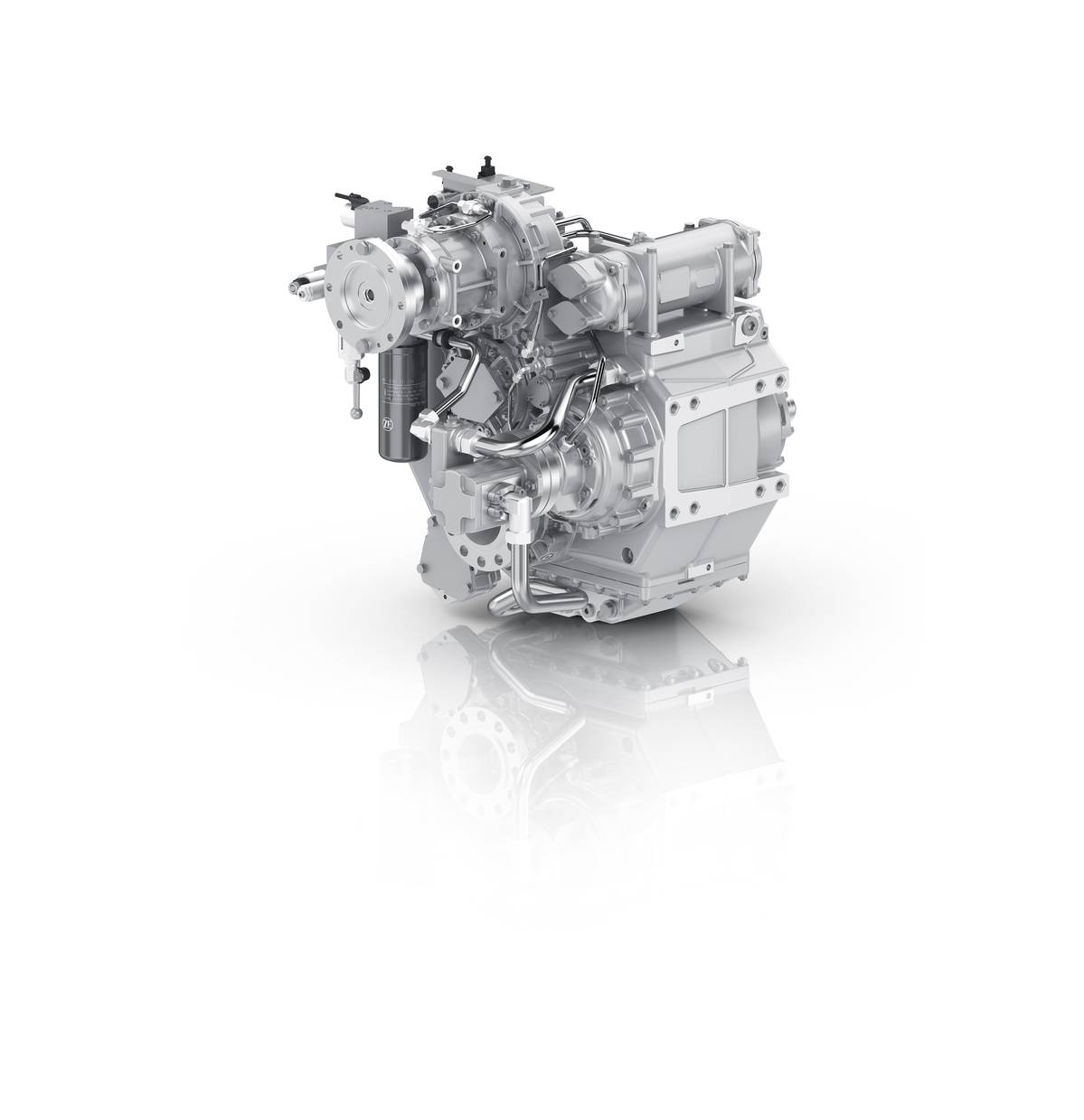Tech File
Propulsion
ZF’s New Tech Meets Evolving Demands
ZF is rolling out new transmissions optimized for hybrid and electric propulsion systems in high-speed vessels.
By Eric Haun
ZF has long offered propulsion products for hybrid and electric marine applications. Now, as the demand for green technology grows across many vessel segments, the company has recently rolled out a pair of new transmissions optimized for hybrid and electric propulsion systems in high-speed vessels like pilot boats, ferries and water taxis.
ZF’s 3000 NRD PTI has been unveiled as a space- and weight-saving solution for hybrid propulsion in waterjet vessels, while the 3200 A/V PTI is a new down-angle transmission for hybrid drive systems.
Based on the popular ZF 3000 series, the 3000 NRD PTI hybrid waterjet transmission is designed for a maximum output of 1,940 kW and 7,560 Nm on the main unit, as well as 250 kW and 1,500 Nm on the electric power take-in (PTI). The ratio covers the range i=1.093 to i=2.952.
The new variant can be coupled with electric motors for low-noise, low-emission operation in protected waters, ports or bays, or the electric motor can power onboard equipment. Its compact design enables easier integration into small engine rooms on board quicker-moving working vessels that use waterjet propulsion such as ferries, crew transfer vessels (CTV) and fireboats.
ZF said it has received initial orders for the new hybrid waterjet transmission and noted patrol boats and firefighting vessels in Asia have already been outfitted with the system.
The company added that it is also developing further variants—the ZF 5000 NRD PTI and ZF 8000 NRD PTI—that can cover larger power output ratings.

The other new transmission offering recently launched by ZF is the 3200 A/V PTI, which also features a compact design and lightweight construction with an aluminum housing, making it suited for fast craft in the 1,295- to 1,940-kW range with limited installation space, such as ferries, pilot boats, patrol boats or coast guard vessels. An additional motor—such as an electric motor, for example—can be connected without reducing the permissible power of the main drive, the manufacturer said.
The system supports power ranges from 1,295 kW to 1,940 kW, offers a maximum torque of 7,560 Nm, and is compatible with electric motors up to 500 kW. The transmission covers the ratio range from i=1.351 to i=3.444. The power-take-in (PTI) ratios are also variable, enabling customization based on operational needs, such as during maneuvering or short-term boost modes, ZF said. Additionally, its hydraulic shift clutches managed by a common control function.
ZF said the first vessel fitted with the 3200 A/V PTI is slated for delivery in the fourth quarter of this year.
George Lewis, head of ZF’s commercial-fast craft product line for North/Central America and the Caribbean, said the company is keeping close watch on the evolution of electric and hybrid technology in the marine sector to ensure the company’s broad range of products will meet market demands as the industry inches closer to new rules and requirements for greenhouse gas reduction. “It's going to be a slow move up,” Lewis said. “You'll see us add more and more across our product line.”
However, the company’s approach is a measured one, as the adoption of hybrid and electric propulsion in the marine industry remains uncertain, with high costs, infrastructure challenges and regulatory hurdles still to be addressed, Lewis explained.
“The hardest part is the cost,” Lewis said, referencing the higher price tags associated with building hybrid and electric vessels as well as putting in place the required shoreside infrastructure for charging. “It's a lot for a private operator to take on.”
In the U.S., much of the hybrid and electric vessel builds and conversions that are moving forward—especially in the ferry segment—are able to progress with government subsidy support, and Lewis said it will be these projects that help to pave the way for the industry’s future.
“As that technology gets out there and these ferry operators, in particular, can experience it and understand it, and there's more information on the daily operational cost, that'll help progress this into a direction that we can all sink our teeth into and really start moving forward more quickly. [The technology uptake] will increase exponentially as the decade goes on and as [regulatory] deadlines get closer.”
“I don't want to say the U.S. is going to procrastinate by any means. We have the ways and means to direct our technology in any way, shape or form that we want,” Lewis added. “We want to make sure that there is a healthy balance between risk and reward as we go forward.”
